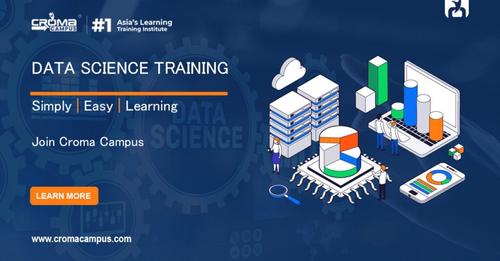Data Science is a multifaceted technical field that deals with the analysis of a copious amount of data using sophisticated tools and techniques. It is a rapidly advancing field and is adopted by a vast number of enterprises and ventures to find unseen patterns, virtualize complex data, and derive meaningful interpretations. It primarily helps corporations in taking sound business decisions by being mindful of future trends, market behavior, and consumer requirements. The extent of applications has grown at a rapid rate and it is now a pivotal aspect of the marketing domain and IT landscape. Now, as far as the job prospects are concerned, it is the best field in the market. Take industry-specific insights from Data Science Training in Gurgaon and grow in this domain. It is an efficient solution for structuring the data drawn from different sources, presenting in a variety of formats, and visualizing it using graphs.
Now, let us explore a few other aspects of this interdisciplinary field.
Prerequisites Before Getting into Data Science
Data Science is an expansive field and involves various disciplines, sophisticated tools, and multifarious features to attain targets. Therefore, professionals need to be proficient in a lot of skills. Though skills do develop after experience and expand over the years, there are a few things that candidates should master before getting into the industry.
-
Machine Learning (ML) and Artificial Intelligence (AI)
These two are fields of their own. However, analysts integrate knowledge from all three domains and develop what is known as predictive models. ML and AI expand the scope of data science and aids in building intelligent algorithms. Though it is not possible to learn all aspects of ML and AI at the beginning of the career, a thorough understanding of the fundamentals is necessary. There is also high demand for professionals who are adept in building predictive and other data models.
-
Statistics
Data Science deals with a huge volume of data and converting them in the form of tables and columns. Proper structuring, formatting, and visualization are required to convert the data into the form using which analysts can derive conclusions. Therefore, deep knowledge of mathematical functions, bar graphs, descriptions, and inferential statistics is of paramount importance. It is also a core aspect of ML algorithms and especially comes in handy when converting data patterns into actionable evidence.
-
Programming
Once you enter the data science domain, you would have to deal with programming in some sort of way. In fact, it is the core aspect of building and implementing complex algorithms. Without programming, none of the concepts are of no use. Therefore, regardless of how impeccable your knowledge is in this domain, having practiced knowledge of coding and syntax is significant. Now, there are a lot of programming languages used in the field, but Python comes out at the forefront for beginners who are starting out. It is an OOP language and makes it easy for programmers due to the availability of built-in functions and extensive libraries.
-
Mathematical Modeling
Now, as a data scientist, you will be judged on your performance in building efficient mathematical models. A mathematical model is a comprehensive algorithm that helps analysts in making quick predictions and calculations using a large database. It is essentially a sub-field of Machine Learning. The analysts should be thorough with all the processes and choose algorithms that would solve the problem at hand. They should also be aware of how to read these models and make them intuitive enough to automate repetitive processes.
Now, let us take a brief look at the roles of professionals in this interdisciplinary field.
Roles of a Data Scientist
It is a demanding job and requires professionals to be on their toes in all the tasks they partake in. Impeccable analytical skills, a thorough understanding of the problem, and awareness of the solutions available are absolutely necessary. Therefore, you should have a deep understanding of your job description before you enter the domain. Refer to the important bullet points in this section:
- The first role involves understanding each part of the problem. Asking relevant questions and knowing the requirements inside out. It is only then can a professional start to think about the solutions that would be necessary.
- The role involves an accurate determination of data variables and sets that would come in handy in solving the problem.
- You also need to expert in assembling data from distinct sources and then integrating and structuring them into a correct format.
- Ascertain completeness, uniformity, and accuracy and implement proper analysis of data using sophisticated techniques. Data Science enables analysts to use high-tech visualization methods such as 3D models, bar graphs, histograms, Gantt charts, etc.
- Build and implement mathematical models such as predictive models using AI and ML methodologies. The models enable teams to make quick calculations, predictions, and decisions using market insights and data analysis.
Conclusion
It is an enriching career for those who want a challenging field, high-market value, progressing opportunities in and out of the industries, and high remuneration throughout. Data Science is a field that will dominate the IT landscape in the coming decades. It is also an evolving field and the experts have only begun to comprehend its widespread application range. The above article comprehensively sheds light on the prerequisites and job responsibilities of data scientists. There is a high value for professional courses such as Data Science Training in Noida because of the explosive demand in the market. For rapid growth in this competitive field, you will have to go through months of rigorous training.

